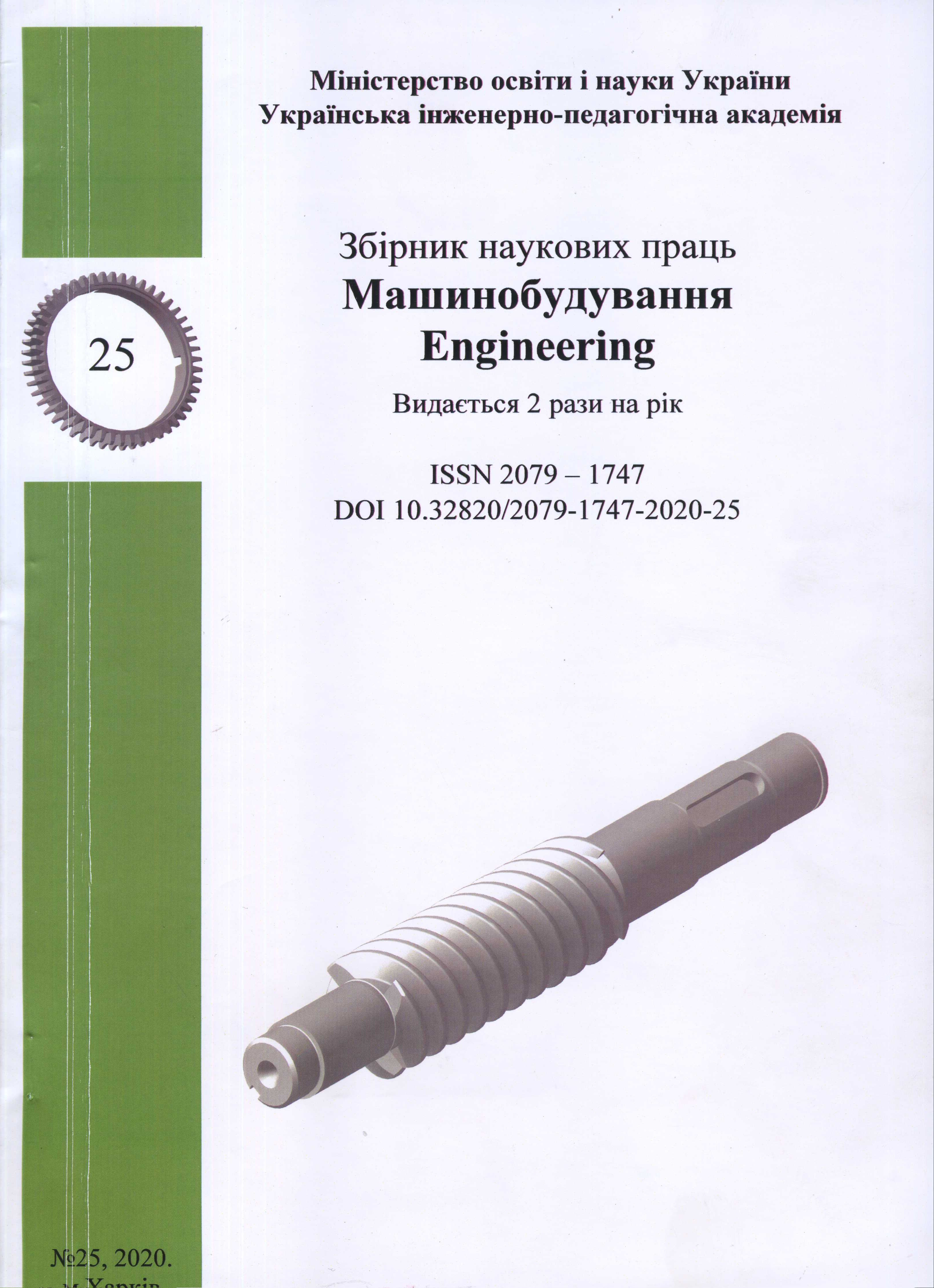Ensuring the accuracy of machining coordinated holes in systems without the direction of the cutting tool
Abstract
DOI: https://doi.org/10.32820/2079-1747-2020-25-99-106
The article investigates one of the current tasks of mechanical engineering, which is further development and improvement of new technological methods of processing workpieces of machine parts, usage of new structural materials and improvement of the quality of processing of machine parts. It can be concluded that the difficulties of processing holes increase along with the increase in their depth. Here, the correct selection of the cutting tool, equipment, cutting modes, use of lubricating and cooling liquid come to the fore. It was substantiated that the relevance lies in the fact that with the comprehensive development of mechanical engineering, the organization of new industries for the production of machinery and equipment for various technological purposes, the range of parts with deep holes is expanding rapidly. Most machine parts are made by cutting. Rolled castings, forgings, stamping, etc. serve as workpieces for such parts. The process of processing parts by cutting is based on the formation of new surfaces by deformation and subsequent separation of the surface layers of the material with the formation of chips. After removing the allowance on metalcutting machines, the workpiece acquires the shape and dimensions corresponding to the technical drawing of the part. It was found that to reduce the complexity and cost of manufacturing parts, as well as to save metal, the size of the allowance should be minimal, but at the same time sufficient to obtain good quality parts and with the required surface roughness. Various mechanical methods of metal separation have been widely used in the industry, first of all cutting with hacksaw blades, band saws, cutters, etc. Machining of workpiece surfaces is one of the main final stages of machine parts manufacturing. As a result of the performed experimental research, empirical dependences for calculation of practical fields of scattering of the coordinated sizes at processing without the direction of the cutting tool were deduced.
Downloads
References
Burdeynaya V., Pashchenko, Е., 2013, Accuracy of coordinated dimensions when processing holes without the direction of the cutting tool, Mechanical Engineering: Coll. Science. UIPA Ave., no.12.,pp.125–129.
Carlos, G.,2009, Analysis and Design of Marine Structures ,CRC Press.
Oberg, E.,1920, Gage design and gage making, N. Y.
Ettinger, W.J. Bartky, W.,1936, Basis for Determining Manufacturing Tolerances,“The Maschinist” ,vol.80 / 36 , pp. 23-28
Gugnin, V.P.,2011 Metrological support and verification of measuring instruments of physical quantities , Science and Technology
Anuriev, V.I., Zhestkova І. Anuriev, V., 2001, Handbook of designer-machine builder ,8th ed., Reworked. and ext. T. 2., Mashinostroenie, Moskva.
Friedlander, I. G.,1980, Calculations of machine accuracy in design, Higher School, Kiev-Donetsk
Bazrov, V., 1978, Technological bases of design of self-adjusting machines, Mashinostroenie , Moskva
Portman, V.,1981, Universal method for calculating precision mechanical devices,Journal of Mechanical Engineering, Vol. 7 , pp. 12-17
Krause – Leipoldt, R.,1980, Fǔr Sonderwerk - zeug – maschinen, Standartisierte Baueinheiten Maschinenmarkt, Bd, 86. Vol. 68. , pp. 1300- 1302.
. Worthifigton, V.,1977, Сomprehensive literature survey of chip controol in the turnig prjzess., Int. J. Mach. Tool and Res., pp. 103-116


